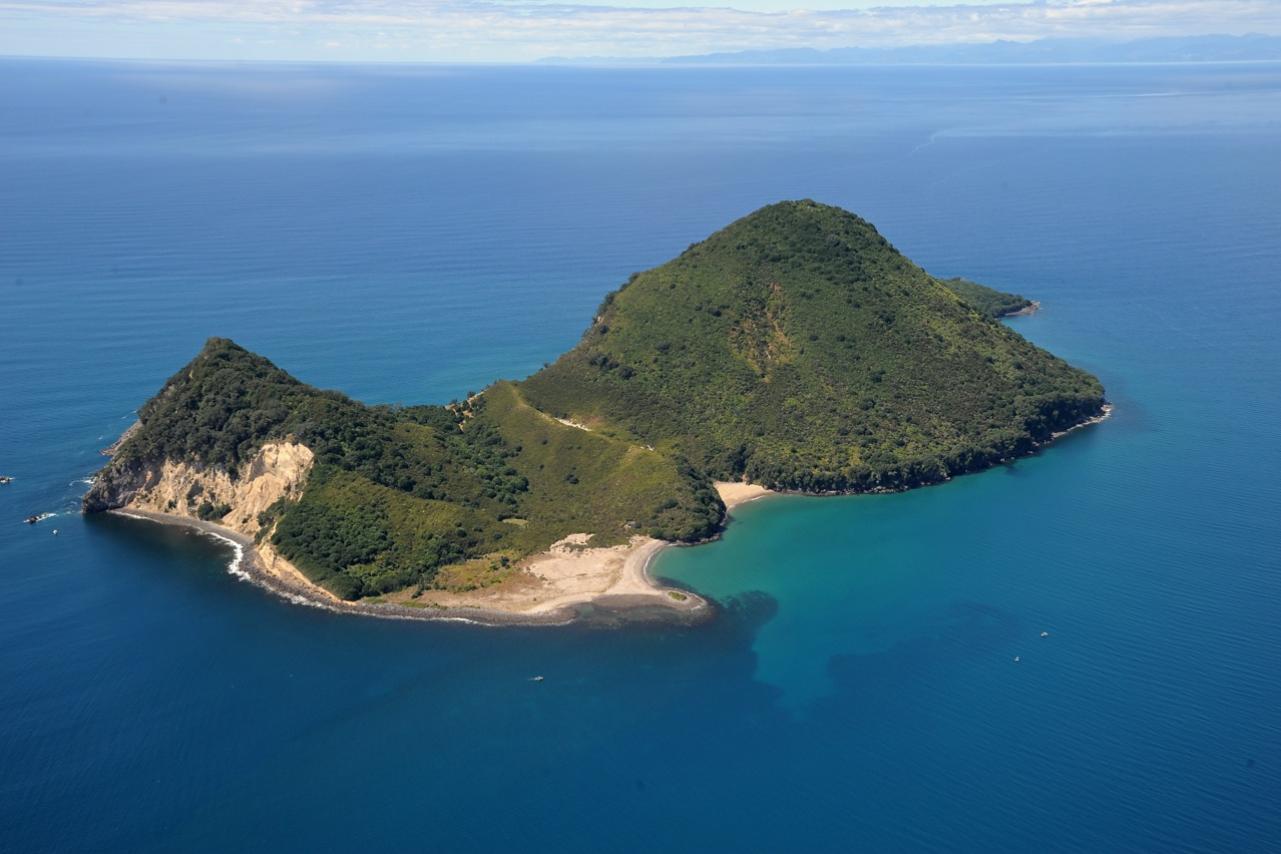Moutohorā / Whale Island is an island rich in Maori and European history; a sulphur mine, pa site and whaling station. This information is republished with permission from the Department of Conservation
Māori sites
Numerous archaeological sites of both Māori and European origin have been recorded, including an extensive pa (fortified earthworks) site on Pa Hill and a number of house terraces and garden sites, middens (food refuse dumps), stone tool manufacture areas and stone walls.
After permanent Māori occupation ceased in the early nineteenth century, Ngati Awa and Tuhoe continued to visit the island for sea food and muttonbirds/petrel and to collect stones for hangi (underground ovens).
Ngāti Awa history and culture
According to Ngāti Awa, the first known occupation of Moutohorā was by Rongotauroa-ā-tai, a grandson of Toroa, commander of the Mataatua waka. Rongo built and occupied the pa which he called Raetihi Kāwatawata Koangiangi (the summit of gentle breezes). Some of his descendants can be found among Ngāti Awa hapu today.
Taiwhakaea I, the ancestor of Ngāti Awa, occupied Raetihi Pā from time to time as did other Ngāti Awa chiefs including Te Ngārara, Tautumuroa (Taitumuroa) and Kakara. The clean fresh water from Te Puna Wai was only able to sustain the people for short periods each year. Occupation of the island was therefore confined to times of seasonal harvesting.
Motu Harapaki was used as a lookout point to detect intruders and to observe the sea and mainland.There are a significant number of recorded archaeological sites. Evidence indicates that further investigation is required. Ngāti Awa continue to use Moutohorā as a learning place.
Wāhi tapu (sacred places)
Te Pari Kawau (roosting place of the cormorant), at Oneroa, is an urupā hāhunga (temporary burial ground). Ngāti Awa expect the public to observe the tapu nature of this site and to stay away from it.
Waiariki/Te One Pā, situated at Te Onepu, is significant to Ngāti Awa for its geothermal qualities and hot springs.
In 1908 volcanic activity caused an earthquake which modified these sites.
Wāhi taonga (special places)
Māra kumara (kumara garden), at Te Rawhiti. Ngāti Awa aims to protect this area, which was historically used to grow kumara.
Te Puna Wāi (water spring), at Oneroa, is the only known source of fresh water.
One Raki (Northern Bay), is considered by Ngāti Awa to be a mahinga mātaitai (seafood gathering place).
Raetihi Pā, including the stone walls that form terraces.
Business Ventures
The first European occupation came in the 1830s with an unsuccessful attempt to establish a shore-based whaling station. The venture failed without a single whale being captured.
Forty years later came attempts to make money from sulphur. It was extracted and sold to a refinery in Auckland over a number of years but was of poor quality, and the venture was abandoned in 1895. The next phase of industrial activity came in 1915, when quarrying provided rock for the construction of the Whakatāne harbour wall. A total of 26,000 tonnes of rock was removed over five years.
In 1965 Moutohorā was declared a wildlife refuge and the island was bought by the Crown in 1984. The wildlife refuge status was revoked in 2012 and the wildlife management reserve allows for the cultural take of mutton bird to be legal on the island.
Republished with permission from the Department of Conservation
